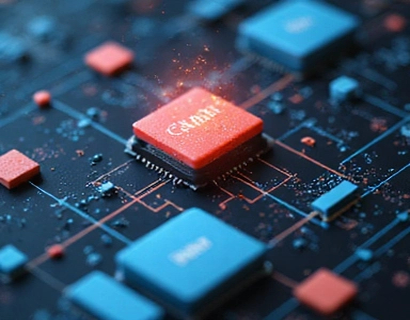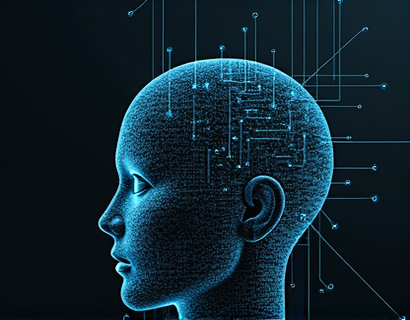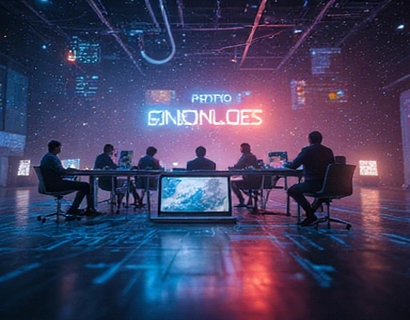Interactive Space Learning: Personalized AI Guides for Educators and Enthusiasts
In the realm of space and astronomy, the quest for knowledge has always been driven by curiosity and the desire to explore the unknown. With the advent of advanced technology and artificial intelligence, a new era of personalized learning has emerged, offering tailored experiences that make complex concepts accessible and engaging for both educators and space enthusiasts. This article delves into the world of interactive space learning, where AI-driven tools serve as personalized guides, enhancing the educational journey through customizable settings and immersive experiences.
The integration of AI in space education represents a significant leap forward, providing users with a dynamic and interactive platform to explore the cosmos. These AI-driven tools are designed to adapt to individual learning styles and preferences, ensuring that each user's journey through space and astronomy is unique and tailored to their needs. Whether you are a seasoned educator looking to enrich your curriculum or a passionate enthusiast eager to deepen your understanding, these personalized AI guides offer a gateway to a more engaging and effective learning experience.
Personalized Learning Experiences
One of the key advantages of using AI in space education is the ability to create personalized learning paths. These AI guides can assess a user's current knowledge level and interests, then curate content that is both challenging and relevant. For educators, this means being able to assign specific modules or topics that align with their lesson plans, ensuring that students receive a customized education that complements their existing knowledge.
For enthusiasts, the AI guide can recommend areas of interest based on past interactions and expressed curiosities. This personalized approach not only makes learning more enjoyable but also more effective, as users are more likely to engage with content that resonates with their interests. The AI can adjust the complexity of the material in real-time, providing explanations and examples that match the user's understanding, thereby fostering a deeper comprehension of intricate astronomical concepts.
Interactive and Immersive Learning
Interactive learning is at the heart of these AI-driven tools. Users are not passive recipients of information but active participants in their educational journey. Through a combination of text, images, videos, and interactive simulations, these tools bring the wonders of the universe to life. For instance, users can explore virtual tours of planets, moons, and stars, interacting with 3D models and receiving real-time information about each celestial body.
Simulations play a crucial role in this interactive experience. Users can witness cosmic events such as solar eclipses, planetary alignments, and supernova explosions in a highly realistic and immersive environment. These simulations are not only visually stunning but also educational, allowing users to observe and understand phenomena that would be impossible to witness in person. The AI guide can provide context and explanations during these simulations, enhancing the learning experience and ensuring that users gain a comprehensive understanding of the events they are observing.
Customizable Settings for Tailored Learning
One of the most powerful features of these AI-driven learning tools is the customizable settings. Users can adjust various parameters to tailor their learning experience to their specific needs and preferences. For educators, this might include setting the difficulty level of the content, selecting specific topics to cover, and determining the pace of the lessons. For enthusiasts, customizable settings can include the type of content displayed, the level of detail provided, and the format of the information (e.g., text, video, interactive quiz).
These customizable settings ensure that the learning experience is not only personalized but also flexible. Users can revisit and adjust their settings as their knowledge and interests evolve, making the tool a long-term resource for continuous learning. For educators, this flexibility allows for seamless integration into existing curricula, enabling them to adapt the content to fit their teaching goals and the needs of their students.
Engaging and Accessible Content
Making complex astronomical concepts accessible is a primary goal of these AI-driven learning tools. The content is designed to be engaging and easy to understand, breaking down intricate ideas into digestible pieces. The AI guide uses clear language and relatable examples to explain difficult topics, ensuring that users of all backgrounds can grasp the material.
Visual aids are a critical component of this approach. High-quality images, infographics, and videos help to illustrate concepts and make the learning process more enjoyable. Interactive quizzes and games further reinforce learning, providing immediate feedback and encouraging users to engage more deeply with the material. The AI can also adapt the presentation of content based on the user's responses, offering additional explanations or moving on to more advanced topics as appropriate.
Support for Educators
For educators, these AI-driven tools offer a valuable resource to enhance their teaching methods and improve student engagement. The ability to customize content and learning paths allows educators to create a more personalized and effective learning environment. The AI can provide insights into student progress and understanding, helping educators identify areas where students may need additional support or challenge them with more advanced material.
These tools can also serve as a supplementary resource, providing educators with additional content and activities to complement their lesson plans. The AI can suggest relevant topics and resources based on the current unit of study, saving time and effort in curriculum development. Moreover, the interactive nature of these tools can help educators foster a more interactive and engaging classroom, promoting active learning and critical thinking among students.
Community and Collaboration
Beyond individual learning, these AI-driven tools can also facilitate a sense of community and collaboration among users. Forums and discussion boards integrated into the platform allow users to share insights, ask questions, and collaborate on projects. Educators can connect with peers to exchange teaching strategies and resources, while enthusiasts can join groups based on shared interests to explore the universe together.
The AI guide can even facilitate group learning experiences, suggesting collaborative projects or discussions that align with the interests and knowledge levels of the participants. This community aspect not only enhances the learning experience but also fosters a sense of belonging and motivation among users.
Continuous Learning and Updates
The field of astronomy is constantly evolving, with new discoveries and advancements being made regularly. These AI-driven learning tools are designed to keep pace with these developments, ensuring that users always have access to the most up-to-date information. The AI can incorporate new data and discoveries into the learning content, keeping the material fresh and relevant.
For educators, this means having a resource that can be easily updated to reflect the latest scientific findings, ensuring that their students receive the most current education. For enthusiasts, the continuous updates provide a constant source of new and exciting content to explore, keeping their passion for space and astronomy alive and vibrant.
Conclusion
Interactive space learning powered by AI represents a transformative approach to education and personal development. By offering personalized, interactive, and accessible content, these tools make the wonders of the universe available to everyone, regardless of their background or experience level. Whether you are an educator seeking to enhance your teaching or an enthusiast eager to deepen your knowledge, these AI-driven guides provide a valuable and engaging resource for exploring the cosmos.
As technology continues to advance, the potential for even more sophisticated and immersive learning experiences is vast. The future of space education is bright, with AI-driven tools leading the way in making the universe more understandable and inspiring for all.










































